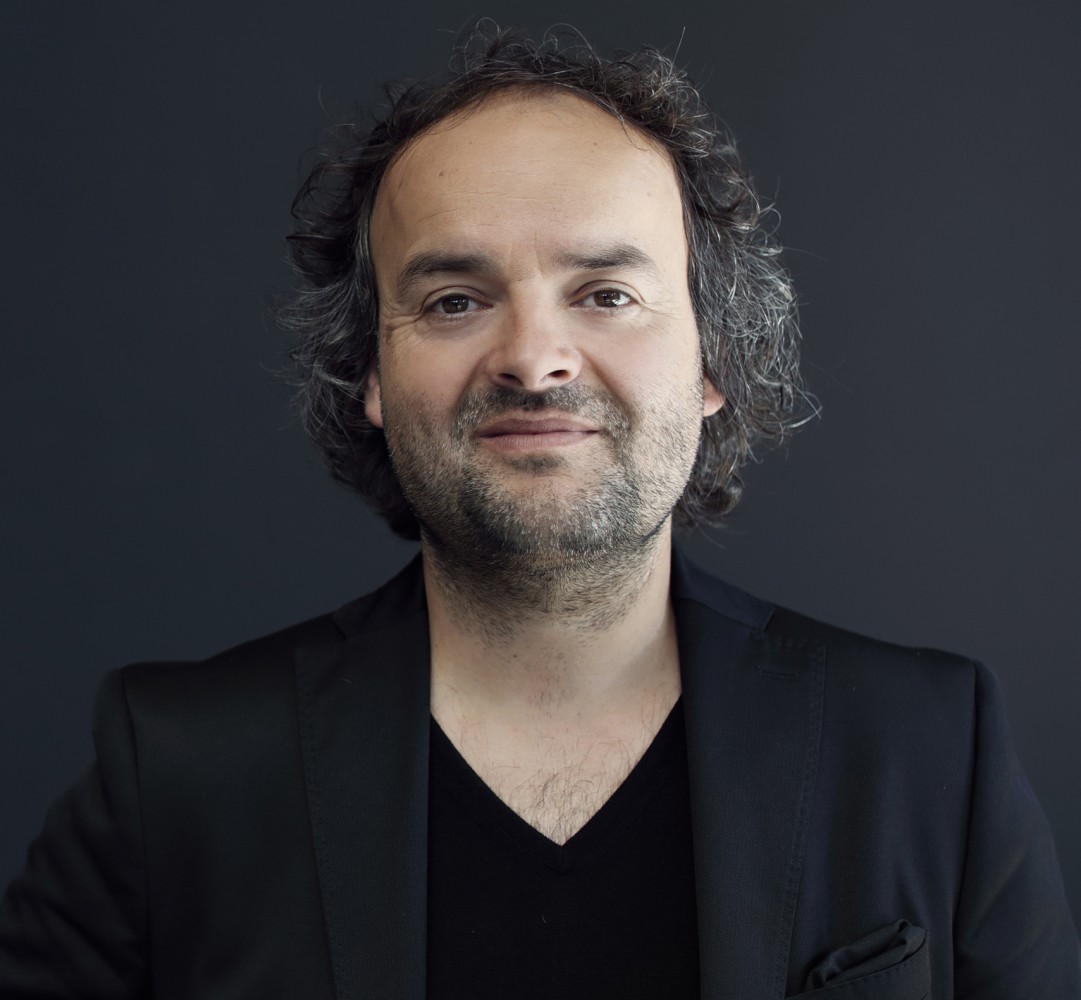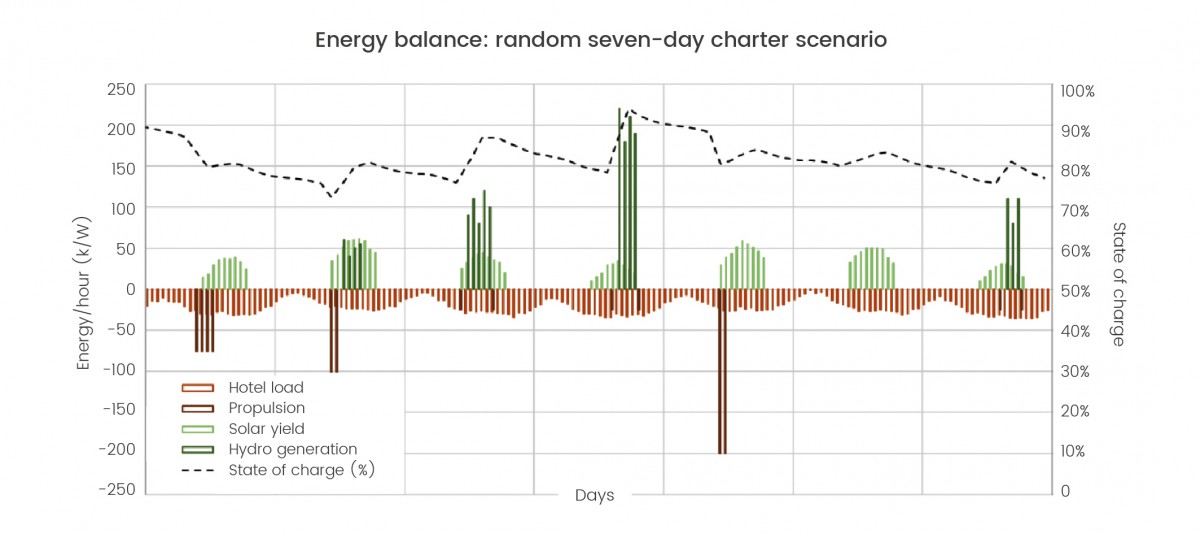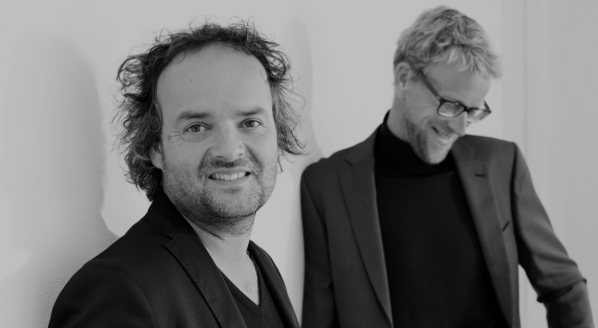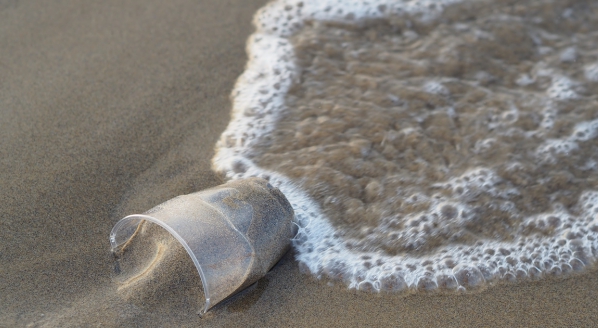Project Zero
A close-up look at Vitters’ 69m ketch and the foundation behind it, with Marnix Hoekstra, co-creative director at Vripack…
The concept of a zero-fossil-fuel superyacht has seemed a bridge too far for much of the industry despite the imperative placed on it by encroaching regulatory frameworks. There are many different roads to reach this target. The zero-emissions arms race may have been slow out of the blocks, with more than a few false starts, but one project may be half a boat length ahead.
Many of the leading motoryacht manufacturers have intriguing projects in the pipeline. This side of the industry has the advantage of looking to developments in the commercial sector for inspiration, with methanol, cryogenic hydrogen and ammonia just some of the solutions in various stages of development across the leading commercial suppliers and shipyards.
The majority of ‘sustainability solutions’ are less ambitious than zero-fossil fuels. Despite the unambiguous nature of emissions targets, impeding regulations and dire environmental warnings, many developments and concepts require more than a little mental gymnastics to reframe as being green.
Traditional motoryachts adhering to design conventions are destined to be integrators of incremental solutions offering limited gains, adapting through the piecemeal adoption of disparate technologies. A battery bank here, a methanol conversion kit there, each giving partial solutions that, collectively, are often less than the sum of their parts.
Foundation Zero is ‘on a mission to make sustainable marine travel and hospitality solutions a reality’. Created by a group of impact investors and a team of leading physicists, computer and data scientists, battery specialists and cutting-edge naval architects, with the objective to build the world’s first fossil-fuel-free superyacht.
Project Zero is the centrepiece of the Foundation Zero mission, developed by a group of investors in collaboration with Vripack Design Dykstra Naval Architects, Vitters Shipyard and a wide array of technicians. Intriguingly, Foundation Zero is also open source, with all of the technology available in the public domain. The secrecy surrounding projects with what is in reality a low product variance is maddening at times, to have something this potentially paradigm shifting open to all may be the most ground-breaking innovation.
“It sounds simple, but the biggest eye-opener has been that from day one we’ve
said that there isn’t going to be a combustion engine on board. We’re not going
to have fuel tanks, engine room or generators, they’re just not there.
It’s strange but liberating.”
 Marnix Hoekstra, co-creative director at Vripack.
Marnix Hoekstra, co-creative director at Vripack.
“There are a lot of projects today that claim to be electrical, and they get published by the yachting media. However, when you [dig] a little deeper there is always a 350kW generator or something in the back disguised as a range extender, or words to that effect. It’s just a combustion engine that burns fuel and then stores the power in it at the end of the day.”
Project Zero is going all in. Along with the technical challenges presented by this build is trying to holistically approach the interplay between design and operation. Hoekstra explains that Dykstra Naval Architects, for example, has invested heavily in weather route predictions and algorithmic modelling to analyse 30 years’ worth of weather data. With near total reliance on wind propulsion, Project Zero is going to be at the mercy of the elements.
“That is arguably the most interesting aspect of this project [the outside of the industry influence],” adds Hoekstra. “To give another example, we have physicists who, relatively speaking, may not know much about yacht design. However, with the extensive data that we can provide, they can use computer modelling to examine the thermodynamic properties in incredible detail.”
Diesel is a really beautiful energy carrier, as Hoekstra frames it. It is, in many ways, the metronome by which the industry keeps its rhythm. Reliable, cheap and dirty, its availability and characteristics have shaped the design conventions and rhythms of the superyacht industry for generations.
Without it, or another similarly reliable energy carrier, Project Zero can’t be over-engineered to handle everything with redundancies in the same way as a traditional superyacht. Hoekstra explains that Vitters Shipyard has played a pivotal role in the early testing of ideas and concepts, with spaces such as the roof of the shipyard used to test prototypes.
The equally challenging aspect of the build, according to Bas Peute of Vitter Shipyard, is the myriad of small energy savings that are needed to bring Project Zero’s energy demands down. “A conventional sailing yacht this size would have an average energy consumption of 60kW. The target that is set for Project Zero is in the 25kW region,” says Peute.
“This can only be achieved when no stone is left unturned. For example, we are looking into the hull paint and its reflection so see what effect the paint reflection has on the heating of the interior, which then in turn needs to be cooled by the air conditioning.”
“Another area where we have put focus is the solar panels. Apart from electrical energy produced, these panels also generate heat, heat which could then be used elsewhere in the yacht.”
Sailing conventions are honed from thousands of years of testing. Form follows function in ways that can’t always be totally reimagined. The aesthetics of a design still play a significant role. As such, Project Zero will be a ketch with a relatively conventional rigging configuration.
The maximum height allowed for a vessel transiting the Panama Canal is 57.91 metres above the waterline. This is the clearance available at the Bridge of the Americas, which is the lowest point of the canal’s main navigation channel. This Panamax designation is also the limiting factor for Project Zero. While a taller rig may provide more power, the faster and safer transit through Central America makes more sense than a trip around Cape Horn for what is essentially a prototype.
The key to the system is the ability to generate and store energy. Pioneering builds such as Black Pearl from Oceanco have paved the way; it’s now up to Project Zero to take the plunge.
 Longitudinal cross-section of Project Zero layout.
Longitudinal cross-section of Project Zero layout.
The analogy that Hoekstra uses for hydrogeneration is that of an electric car and its kinetic breaking generation. The electric motor can be used as a generator. As the throttle is released and the electric car is going downhill, it converts the car’s kinetic energy into electrical energy that is fed back into the battery, slowing the car down also.
The same principle is applied to the hydro-generation system on Project Zero. The calculations, as they stand, imply that it will lose around 1.5 knots of boat speed under optimal sailing conditions to generate the requisite energy storage. Much like the loss in speed when a car is coasting downhill, this energy feeds back into the system.
The amount of wasted energy on board the majority of the fleet has come into focus in recent years. The detailed analysis of on-board systems and operational profiles has revealed the extent of this wasted potential and the overcapacity of stored energy and production capacity on board to compensate for this loss.
A common misconception about sailing yachts is that while under sail they are blissfully slicing through the waves in silence. While this may be true of small traditional yachts, something the size of Project Zero requires a lot of energy, especially while sailing.
The heating and lights may keep everyone comfortable, but it’s the operation of the machinery that keeps it functioning. A one-ton anchor at the end of 120 metres of chain, for example, is very hard to lift up from the sea bed. Hoisting a main and mizzen sail simultaneously to Panamax height, while keeping the yacht steady upwind and running the various winches, draws significant power.
Below deck, the engines and generators are running at high capacity which means Project Zero will need a lot of battery power. To meet this, Project Zero’s belly will be filled with an enormous battery bank that produces five-megawatt hours of power, fed through an electric-motor-driven system.
This amount of weight down low below the waterline has added benefits for a sailing yacht. A sailing yacht’s stability is determined by a complex interplay of factors, including the weight and shape of the keel, the yacht’s hull design, sail plan and rigging. However, by placing this much weight low down, the distance between the centre of gravity and the centre of buoyancy is increased, which in turn increases the righting moment.
Having an effective Class society that is open to new ideas is fundamental to the development of such a project. For Project Zero, Lloyd’s Register has taken up the challenge, and Hoekstra says LR has been involved from day one.
“LR was great. Before we even knew what was possible we had them at the table and we said, ‘OK guys, let’s start the conversation. Tell us what we can and cannot do’, and from there we tried to push the leading edge of what is possible. Ambition is one thing but we have to send a safe boat to sea when completed.”
Removing the centrally located engine room and engine control room (ECR), along with a completely re-thought-out tank deck and engineering space, opens up areas for a designer to create a layout that few have dared to dream of. But there are some things that are where they are for a reason.
Hoekstra explains, “Early on, there were some truly wild ideas regarding layout but comfort and convenience dictate certain conventions. Having the master cabin further aft is one such thing. It’s the most comfortable and quiet part of the boat, especially while sailing, so that is where we settled. This boat is going to do a lot of sailing, so we kept that front of mind.”
 Energy balance for a conceivable operational scenario.
Energy balance for a conceivable operational scenario.
Hypothetically, limitless sailing and power generation are great, but realistic expectations are more complex. “Our aim is to achieve 14 days completely off the grid,” says Hoekstra. “By our calculations, if can sail for two hours a day, we could be theoretically free of the grid 365 days a year.”
The 1.5-megawatt generation capacity is roughly equivalent to a wind turbine with a 70-metre diameter. Immensely promising, it’s still worth reflecting on the reality of Project Zero’s likely operational profile and associated emissions load.
While the proposed cruising patterns of Project Zero are unspecified, it will undoubtedly have reliance on shore power and, subsequently, the national grid of the country in which it resides. This may be splitting hairs but it will remain, at least partly, reliant on fossil fuel and non-renewable energy.
The Mediterranean, for example, is a diverse region in terms of its energy mix, and the share of renewable energy in its power grids varies across countries. According to data from the International Renewable Energy Agency (IRENA), the share of renewable energy in the power mix of Mediterranean countries ranged from less than 10 per cent to more than 40 per cent.
Countries such as Spain, Italy and Greece have made significant progress in developing their renewable energy resources and increasing the share of renewables in their power grids. For example, Spain had a 41 per cent share of renewable energy in its power mix in 2019, Italy had a 19.3 per cent share and Greece had a 15.4 per cent share. However, there is still significant room for improvement to meet the EU’s goal of achieving a 32 per cent share of renewable energy in gross final energy consumption by 2030.
Operating outside of these constraints will undoubtedly remain the lionised goal of this ambitious project. However, yachts, no matter how advanced, spend a lot of time in marinas and shipyards. Project Zero will probably not be free of this constraint.
However, from a consumption and emissions point of view, this project is at the forefront. Removing all the fossil fuels is just the start of a decades-long journey to truly emissions-free operations in the superyacht industry.
If this collection of innovators can pull this one off, the marker may be laid down for many more to follow. The custom sailing-yacht market has lagged behind a huge growth in scale and volume from the motoryacht manufacturers. If Project Zero can become a test case for zero-fossil-fuel operations, it may be the stimulus the sector needs to realise its obvious advantage in the race to zero-emission yacht operations.
Profile links
NEW: Sign up for SuperyachtNewsweek!
Get the latest weekly news, in-depth reports, intelligence, and strategic insights, delivered directly from The Superyacht Group's editors and market analysts.
Stay at the forefront of the superyacht industry with SuperyachtNewsweek
Click here to become part of The Superyacht Group community, and join us in our mission to make this industry accessible to all, and prosperous for the long-term. We are offering access to the superyacht industry’s most comprehensive and longstanding archive of business-critical information, as well as a comprehensive, real-time superyacht fleet database, for just £10 per month, because we are One Industry with One Mission. Sign up here.
Related news

Design of the times
Marnix Hoekstra, co-creative director at Vripack, believes true innovation comes from doing what we are already doing, only better
Design

One to One: Vripack
Bart Bouwhuis and Marnix Hoekstra discuss a mature approach to superyacht design philosophy as a means of stimulating market growth through inspiration
Design


The small things
We all have a duty to become more responsible and create a culture of change
Business
Related news
Design of the times
4 years ago
One to One: Vripack
5 years ago
Considerations for the future
5 years ago
The small things
5 years ago
NEW: Sign up for
SuperyachtNewsweek!
Get the latest weekly news, in-depth reports, intelligence, and strategic insights, delivered directly from The Superyacht Group's editors and market analysts.
Stay at the forefront of the superyacht industry with SuperyachtNewsweek



